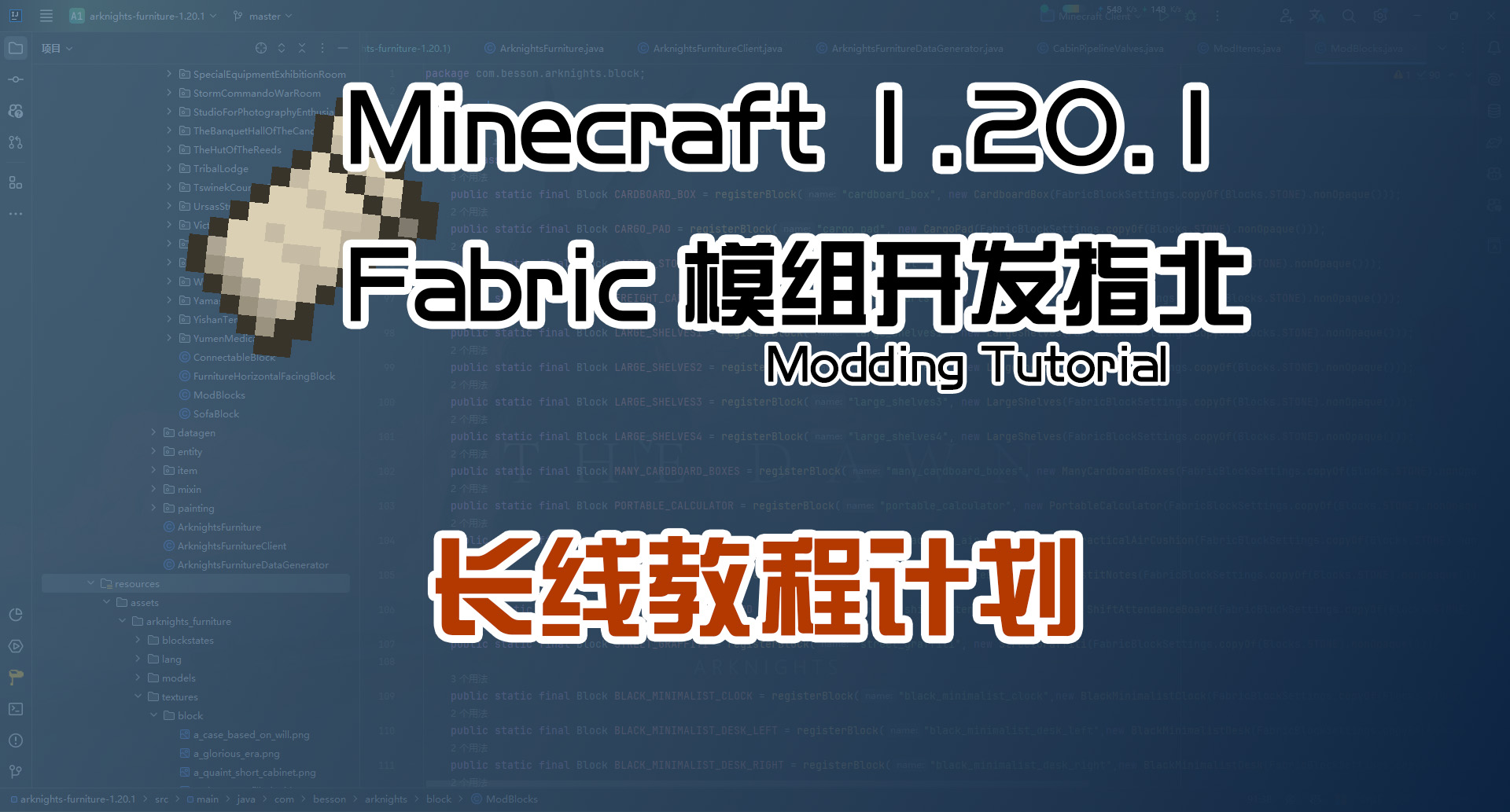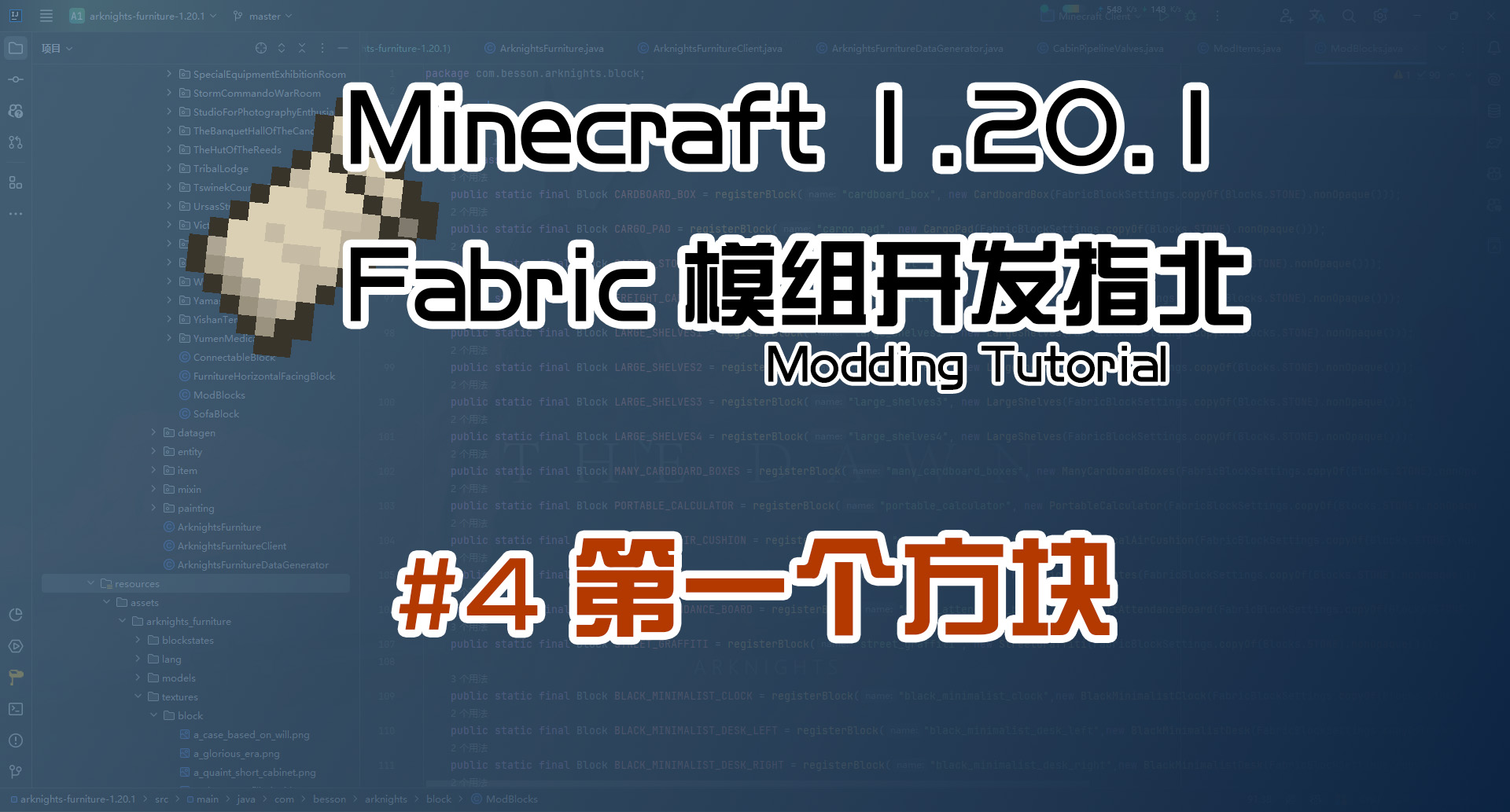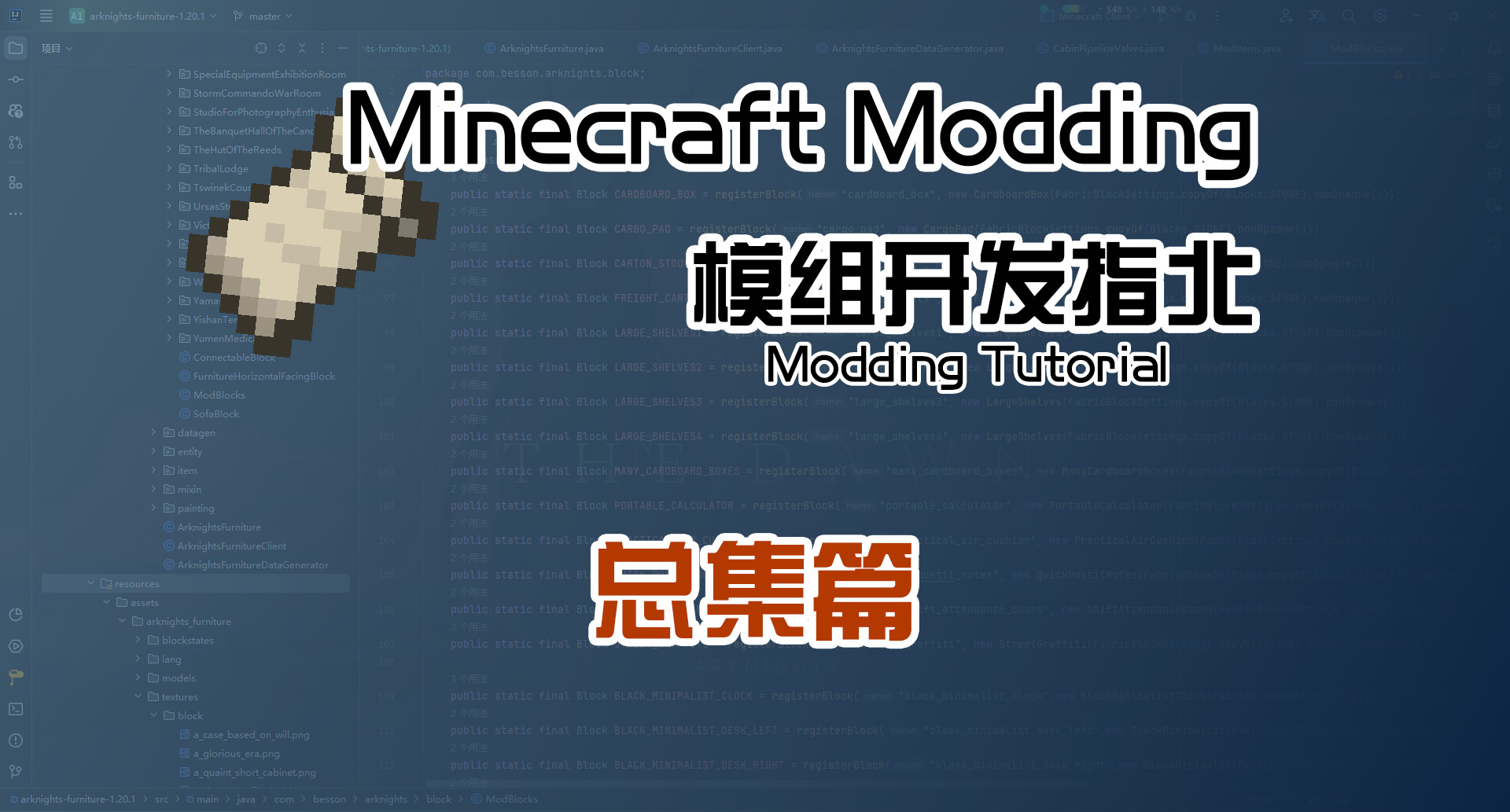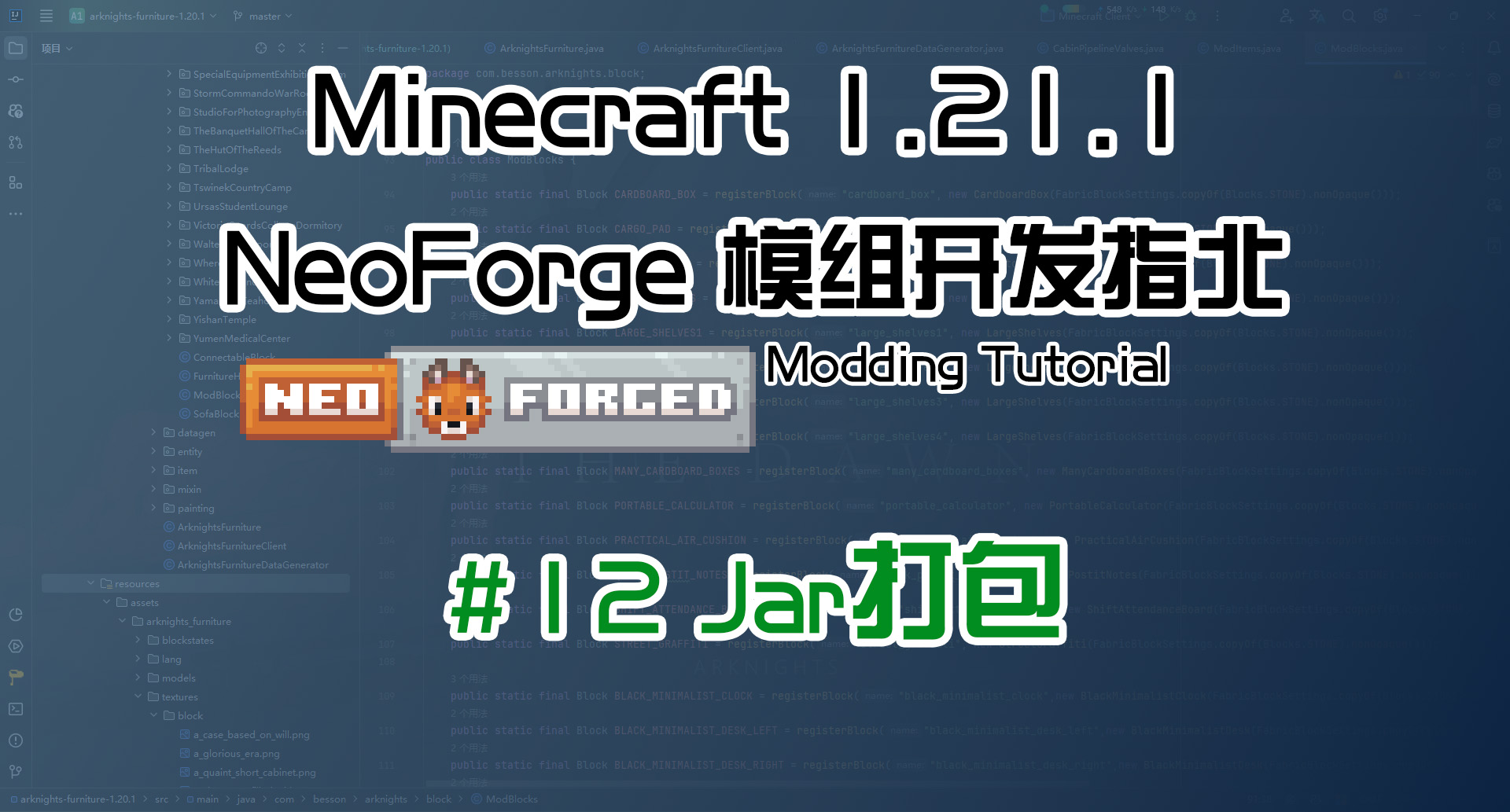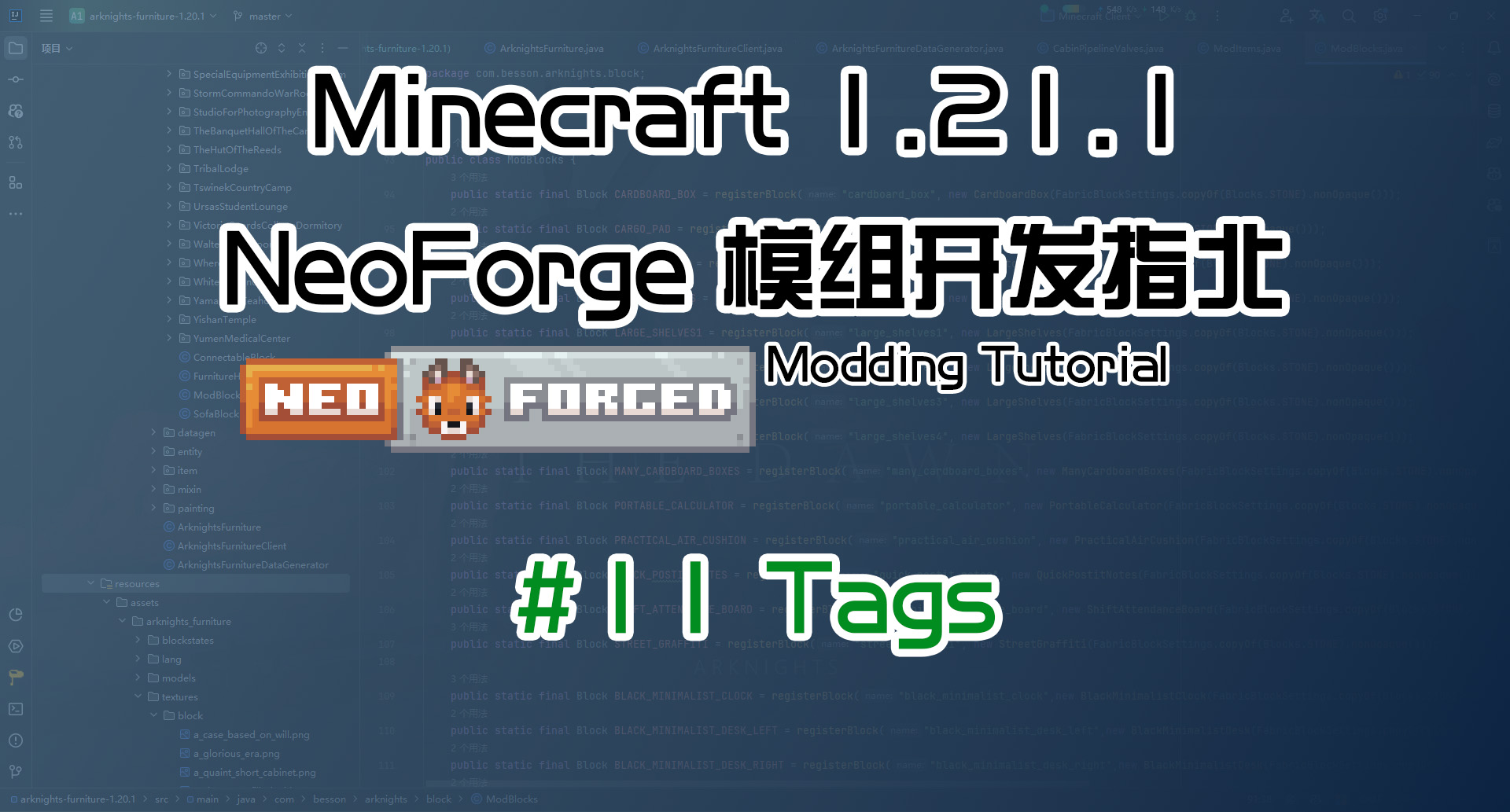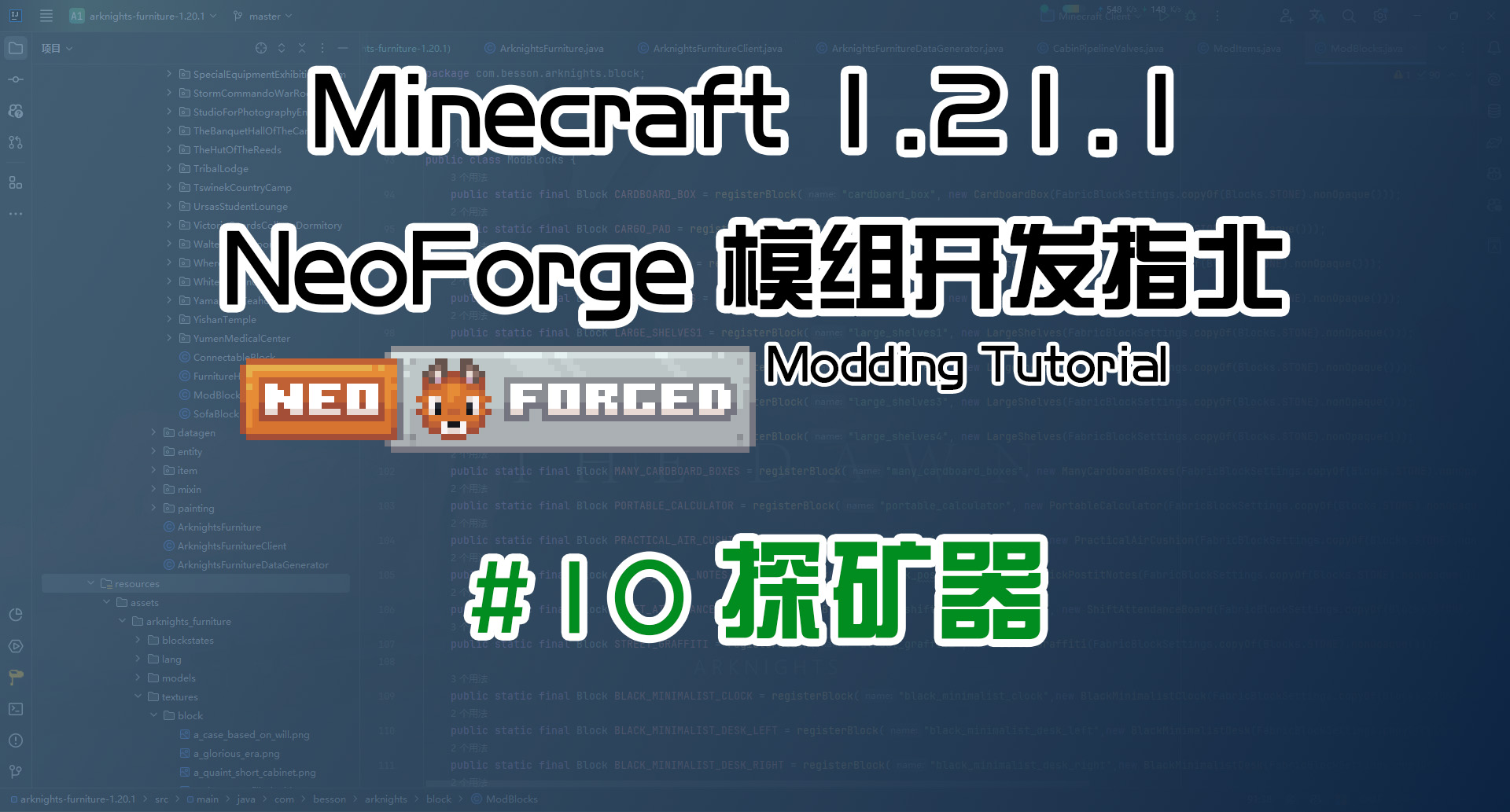Gradle配置文件 1.20 Fabric 长线教程计划
本篇教程的视频
本篇教程的源代码
Null
本篇教程目标
- 理解
build.gradle文件中各个部分内容 - 清楚
dependencies中修饰词代表的意思
build.gradle
本期教程的话,我们重点来讲讲Gradle的配置文件,也就是build.gradle文件
这个文件是Gradle构建工具的核心,它定义了项目的构建规则和依赖关系
当我们想利用其他的API或者其他模组进行开发时,就得改写这里的配置,添加依赖
后面的教程我们也会用到一些第三方API,比如Terraform、Geckolib等等,所以我们今天先来看看Gradle的配置文件
Fabric Wiki对此也做了一些介绍,可以查阅:Fabric Loom
plugins
1 | plugins { |
这个是Gradle项目使用的插件
Fabric的Loom插件,它提供了许多有用的功能,我们也用它进行Fabric模组的开发
maven-publish插件则用于发布项目到Maven仓库
repositories
1 | repositories { |
这个是项目依赖的仓库,你可以将你要用到的API的maven仓库放在这里
它这里也给你注释了,你也可以翻译翻译看一下
dependencies
这里我直接借用Fabric Wiki上的内容来讲
1 | dependencies { |
这个就是项目依赖,我们一个个来看
minecraft
1 | minecraft "com.mojang:minecraft:1.18.1" |
这个是Minecraft的版本,我们的模组必须依赖Minecraft,所以这里必须写上
mappings
1 | mappings "net.fabricmc:yarn:1.18.1+build.22:v2" |
这个是我们开发使用的映射和版本,yarn是Fabric的映射,officialMojangMappings是Mojang的映射
不过还有一种
1 | mappings loom.layered() { |
这个是官方映射和Parchment映射的结合,Parchment也就是羊皮纸映射,如果你接触过Forge和NeoForge的开发,可能用过这个映射
不过在本系列教程中,我们还是用Yarn映射
modImplementation
注:这个部分的修饰词结合了AI的解释
1 | modImplementation "net.fabricmc.fabric-api:fabric-api:0.46.2+1.18" |
这个是Fabric API的依赖,Fabric API是Fabric模组开发的基础,必须依赖
这是我们常见的修饰词,一般也会用它来添加依赖
modApi
1 | modApi "net.fabricmc.fabric-api:fabric-api:0.46.2+1.18" |
这个相当于modImplementation + api,用于暴露API给其他模组
暴露API的意思呢,简单来说,你开发了一个A模组,这个是一个Lib
然后你开发了一个B模组,这个是常规的模组,B模组需要用到A模组,那么A模组就需要暴露API给B模组
一般Lib类的模组会用到它
modCompileOnly
1 | modCompileOnly "net.fabricmc.fabric-api:fabric-api:0.46.2+1.18" |
仅在编译期提供依赖,不包含在运行时,也不会被打包到最终的jar文件中
用户在实际游玩时,还要安装对应的依赖才能正常运行
modCompileOnlyApi
1 | modCompileOnlyApi "net.fabricmc.fabric-api:fabric-api:0.46.2+1.18" |
这个相当于modCompileOnly + api,用于暴露API给其他模组,一般也是Lib类模组会用到
modRuntimeOnly
1 | modRuntimeOnly "net.fabricmc.fabric-api:fabric-api:0.46.2+1.18" |
仅在运行时提供依赖,不参与编译,也不会被打包到最终的jar文件中
用户在实际游玩时,也还要安装对应的依赖才能正常运行
modCompileOnly和modRuntimeOnly也常常一起出现
modLocalRuntime
1 | modLocalRuntime "net.fabricmc.fabric-api:fabric-api:0.46.2+1.18" |
仅在本地运行时提供依赖,不参与编译,也不会被打包到最终的jar文件中
一般是你自己在测试依赖时用的,不怎么用
include
1 | include "example:example-mod:1.1.1" |
这个是包含一个jar文件,当我们打包模组文件时,会把这个jar文件也打包进去
一般比较小的库或者是自己开发的库,可以选择打包进去,这样用户就不用额外下载了
小结
后面还有两个,不过一般不常用,它们是模块化依赖写法,用于引入一个库中特定的一部分,而不是整个库
这些就是gradle的依赖,带api的一般是Lib类模组用的
其他我们用的比较多的是modCompileOnly、modCompileOnlyApi、modImplementation、modRuntimeOnly这几个
但是具体的,还是按照相应库的使用说明来写
processResources
1 | processResources { |
这个是用于处理资源文件的
java
1 | java { |
这个是Java的配置,这里我们也可以改Java的版本
publishing
1 | // configure the maven publication |
这个是用于发布Maven仓库的配置,我们暂时用不到,但是我也提一下
就是这里的repositories,上面也有一个repositories
我还见过不少把依赖的Maven地址写在这里的,这就大错特错了,这里的repositories是用于发布Maven仓库的,而不是用于依赖的
大家写的时候看看清楚,别写错地方了
总结
最主要的还是repositories和dependencies,这两个是我们依赖其他模组开发必须了解的东西
dependencies里面的各个修饰词大家也要搞清楚,用什么、怎么用,当然大部分模组也会提示你写什么

